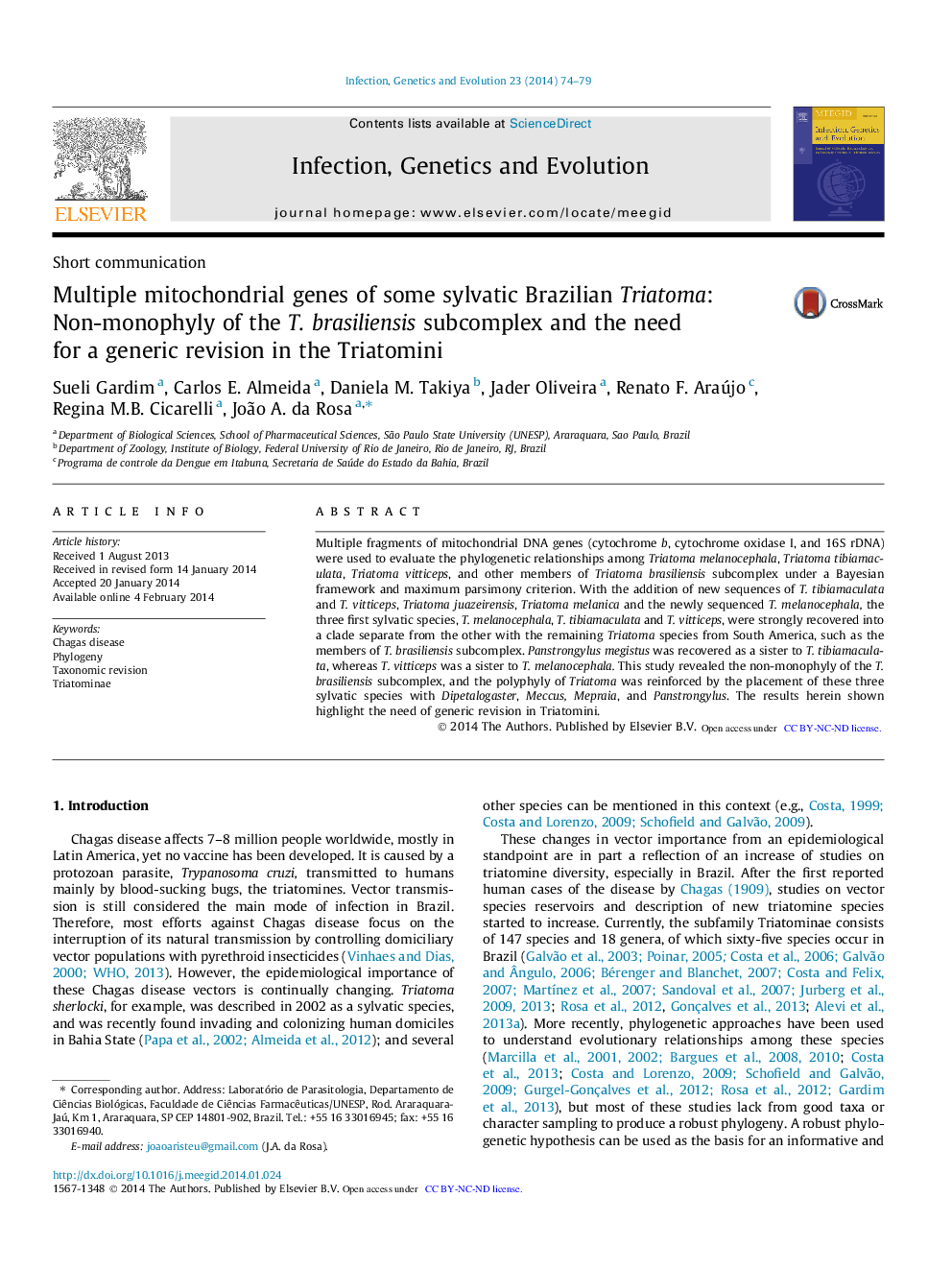| Article ID | Journal | Published Year | Pages | File Type |
|---|---|---|---|---|
| 5909937 | Infection, Genetics and Evolution | 2014 | 6 Pages |
â¢We addressed the non-monophyly of the Triatoma brasiliensis subcomplex.â¢T. melanocephala, T. tibiamaculata and T. vitticeps were not placed with Brazilian Triatoma.â¢T. vitticeps was recovered as sister to T. melanocephala with high support.â¢Bayesian inference recovered T. tibiamaculata as sister to Panstrongylus megistus.â¢We reinforced the polyphyly of Triatoma with respect to other triatomine genera.
Multiple fragments of mitochondrial DNA genes (cytochrome b, cytochrome oxidase I, and 16S rDNA) were used to evaluate the phylogenetic relationships among Triatoma melanocephala, Triatoma tibiamaculata, Triatoma vitticeps, and other members of Triatoma brasiliensis subcomplex under a Bayesian framework and maximum parsimony criterion. With the addition of new sequences of T. tibiamaculata and T. vitticeps, Triatoma juazeirensis, Triatoma melanica and the newly sequenced T. melanocephala, the three first sylvatic species, T. melanocephala, T. tibiamaculata and T. vitticeps, were strongly recovered into a clade separate from the other with the remaining Triatoma species from South America, such as the members of T. brasiliensis subcomplex. Panstrongylus megistus was recovered as a sister to T. tibiamaculata, whereas T. vitticeps was a sister to T. melanocephala. This study revealed the non-monophyly of the T. brasiliensis subcomplex, and the polyphyly of Triatoma was reinforced by the placement of these three sylvatic species with Dipetalogaster, Meccus, Mepraia, and Panstrongylus. The results herein shown highlight the need of generic revision in Triatomini.
